Creepy-Crawly August Garden
 Sunday, August 26, 2018 at 6:25PM
Sunday, August 26, 2018 at 6:25PM This has not been a bad summer. Hot and sticky, yes, but not unreasonable for Alabama. This past week we had a couple of cooler mornings with lower humidity. A touch of fall? Almost! I have continued developing a new area, which I am calling the pollinator garden. I will feature it in a later blog post. Meanwhile, here are some images from around the August garden, including some creepy-crawlies!
I put this colorful hanging bougainvillea behind the birdbath in front of the house. Bougainvillea is not hardy here, but it was inexpensive and I won't feel guilty treating it as an annual. The plant on the right is Tropicana Canna Lily.
During the dog days of summer the shady woodland garden is a nice retreat, and I often find myself walking there during late afternoon. The light that time of day is magical, and I love the shadow play, as seen here around the cast iron plant: 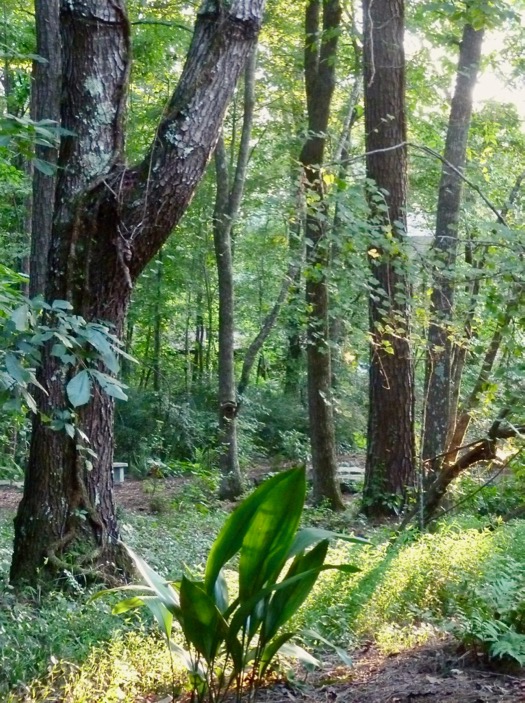
The planting beds in the woodland garden are augmented in the warm months with potted tropical plants, which add color and texture and help fill in the area: 

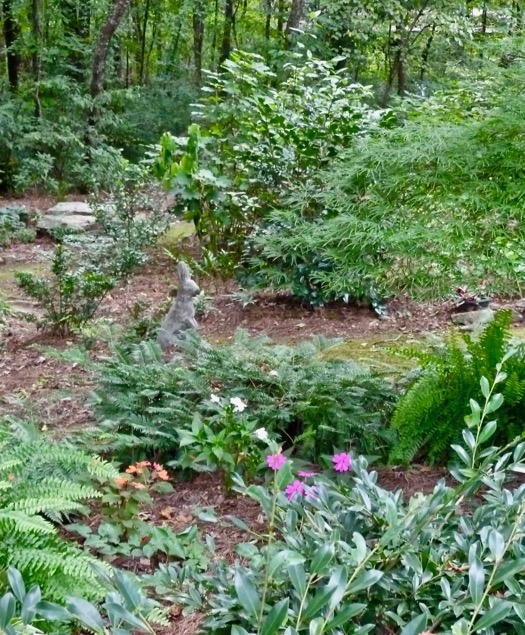
 Clockwise from top left: Hardy begonia (Begonia grandis) is planted in the ground, but variegated fig, Dracaena Marginata, and bromeliads are tropicals that move inside for the winter.
Clockwise from top left: Hardy begonia (Begonia grandis) is planted in the ground, but variegated fig, Dracaena Marginata, and bromeliads are tropicals that move inside for the winter.
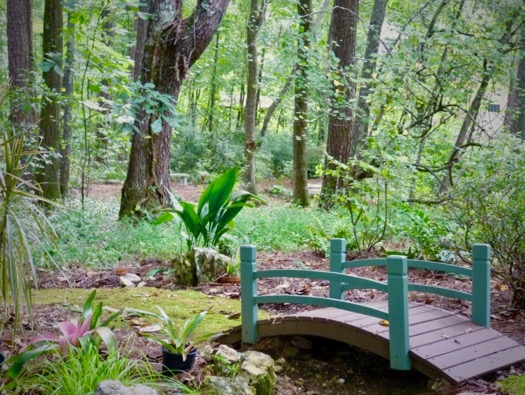
Lady fern (Athyrium) and Peacock Moss (Selaginella uncinata) grow well together next to one of the moss paths:

I also have some potted succulents that spend frost-free months outdoors. I bought most of these as nameless specimens, and I don't know much about them. However, I am delighted that some of them are producing offspring. The small pups may be removed from the mother plant and planted to produce more.

One more thing: It is spider season! Cobwebs are everywhere, and I have to be careful to keep myself from becoming entangled in them as I walk around the garden. One day I captured images of this large web high up in the trees:


I wonder how the tiny spider that created this web knew how to do it? Webs are often spun in the dark, and this web is quite large for such a little creature. I don't see how the spider was able to get a full picture of what it was doing! Yet the design was beautifully formed.
More spider pics: I found this big black-and-yellow argiope spider amidst my tomato plants, and she had encased an egg sack in a web on a tomato plant. By spring, up to a thousand baby spiders may come out of this sack, though only a small percentage will survive. These particular spiders are sensitive to the environment, and their presence is a sign of a healthy, well-balanced ecology. They are also good guys to have in the garden, so I will leave the spider sack alone till the babies hatch in a few months. Hopefully, the dying tomato plant will remain supportive till then. 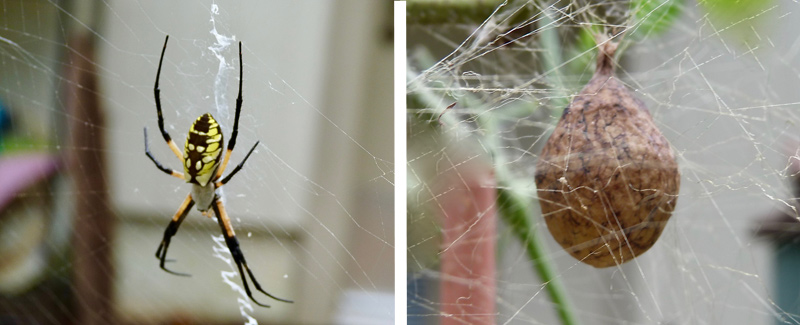
Speaking of tomato plants, we still have a handful of tomatoes on the vine, but soon they will be gone. I was fascinated, and a little horrified, when I discovered this creature, and several of his relatives, on my tomato plants: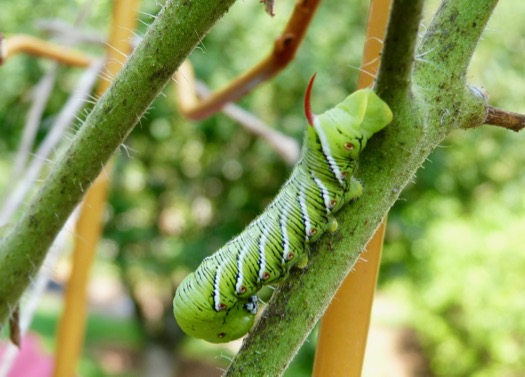 Tomato hornworm
Tomato hornworm
My first inclination was to kill these caterpillars, but tomato hornworms do turn into rather magnificent moths, which hover about like hummingbirds. And they make a good meal for a bird, too. I only have a few tomatoes remaining so I picked the hornworms off and tossed them behind the wood pile rather than killing them. But next year I will be on the alert, armed with insecticidal soap, which they hate. And maybe my garden spiders will help me keep them under control.
You also may enjoy this older post, Late Afternoon in the Woodland Garden, and if you want more information about spiders be sure to see My Little Orb Weaver.



